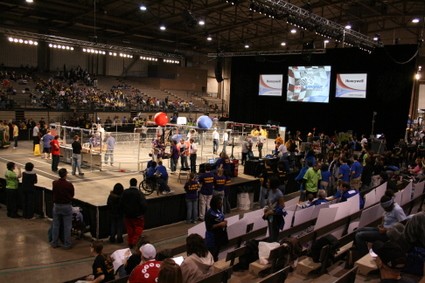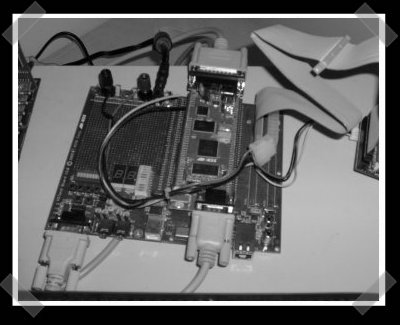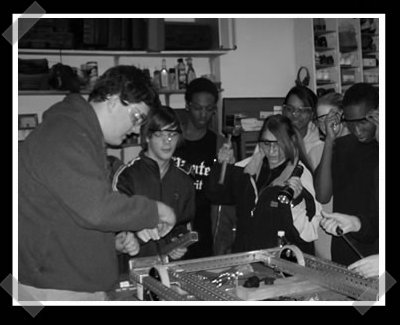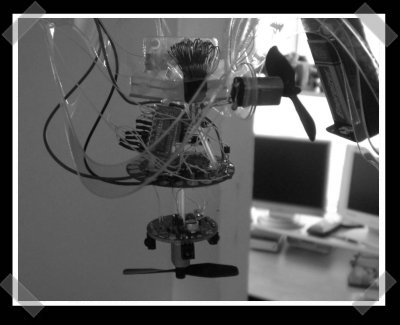
This is an older set of hacks, but I’m surprised we haven’t covered them before. The playstation controller is an interesting alternative to normal robotic controls. This PS1 controller to serial interface is based on a Motorola HC68 series micro-controller. This even simpler version only needs some diodes to interface with a parallel port. Probably more interesting is this how-to on using a wireless PS2 controller with a basic stamp II.
Author: Will O'Brien805 Articles
FIRST Robotics Regional – KC – 2008

When you’re issued safety glasses at the door, you know it’s going to be interesting. As promised, I’m checking out the FIRST robotics regional in Kansas City today. The competition is pretty fierce – not quite flame throwing battle bot action, but the kids have put together some pretty serious robots.
Read on for more pics from the competition.
FPGAs Rock

I was doing some project window shopping today, and FPGA’s came up on my list. [John Kent] put together a pretty impressive documentation set. He’s written up some of his own projects, some how-to’s and linked plenty of good information for the budding FPGA programmer.
Bad-ass Modular Snake Robot
[Andrew] sent in this sweet snake robot video. The snake bots are all about 36 inches long and built from lots of hitech servos and 6061 aluminum. The guys/gals at Carnegie Mellon have built quite a few of these, and I’d say that their work is paying off. They haven’t published much in the way of details, but it appears that the snakes are being computer controlled for faster behavioral development than an on-board mictrocontroller would allow. When I saw the snake motion I was reminded of the winner of the latest Tresser robotics contest – Phoenix. It’s a spider like bot based on servos, but with some very impressive motion programming that was designed with an excel spreadsheet.
Visiting The FIRST Robotics Regional This Friday

Just a quick heads-up. I’ll be checking out the FIRST robotics competition in Kansas City this friday. It’s a robotics comp between teams of high school students – and the prizes include quite a few scholarships. I know we’ve got some readers who are in the competition. If you see a guy with a Hack-A-Day sweatshirt/T-shirt on, say hi and I might hook you up with some stickers. My day job will be providing real-time video streaming of the event, so feel free to check that out.
Arduino Blimp

Here’s a good rule of thumb: “Don’t update your firmware five minutes before you’re going to fly an autonomous robot ten feet away from a former Vice President of the United States.”
That was one of the afterthoughts of [Chris Anderson] after presenting his Arduino controlled blimp at TED. (I might have to squeeze TED into my con schedule next year.) The project itself is somewhat documented here, with some hi-res photos, parts list, and some firmware. Apparently the blimp was overcome by the A/C in the auditorium, but I still dig it.
Hackit: A Better Homebrew Control Interface?

I’ve built a few CNC controllers, and I’ve been a bit disappointed by the state of the control interfaces. Most diy systems rely on a parallel port interface, while a few use a serial connection. Just one that I’ve seen has an actual USB interface, but it’s limited to use with the fab@home software for now.
So what’s the hackit of the day? I think that the hardware hacking, home fabrication community could really benefit from a standardized I/O interface for driving CNC machines, robotics or anything else along those lines. For CNC work, it’ll need a serial or parallel port emulation scheme to allow existing software to take advantage of it. For quicker home development, some simple API’s for controlling the device would be excellent. Imagine using perl to develop robot logic with just a few easy function calls…
Hackit is really your show, so lets hear your ideas.










